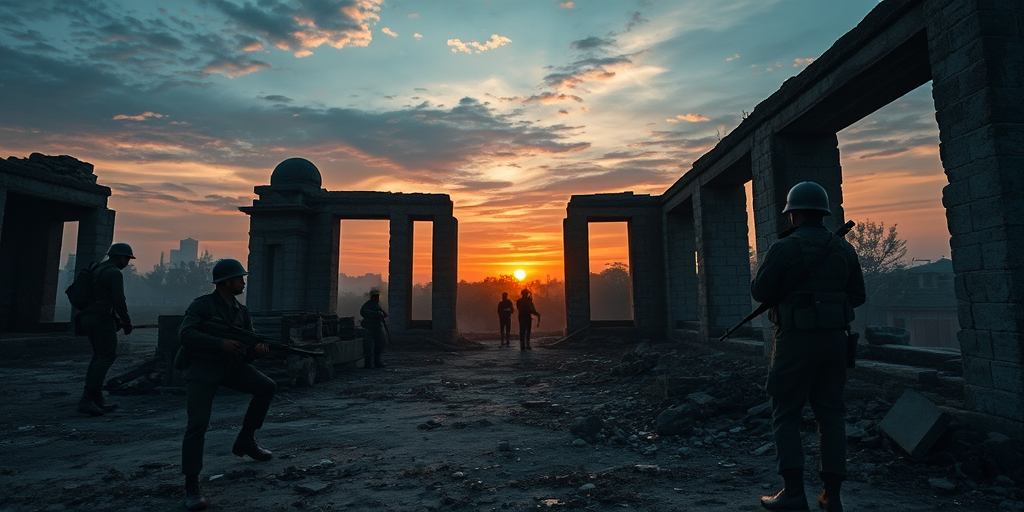Ever wondered how a small band of guerrillas managed to bring a superpower to its knees? The Siege of Dien Bien Phu stands as a compelling case study in military ingenuity and tactical audacity. In this historical analysis, we dissect the intricate interplay between revolutionary guerrilla tactics and French strategic errors, revealing how colonial ambitions crumbled under relentless insurgent pressure. Join us as we explore the battle’s pivotal moments, unmask the underlying causes, and unearth lessons that continue to shape modern military strategy.
Guerrilla Tactics and Unconventional Warfare in The Siege of Dien Bien Phu: When Guerrillas Beat a Superpower

At Dien Bien Phu, the Viet Minh deployed indigenous insurgency tactics that redefined modern combat. Their innovative use of guerrilla warfare—through ambush strategies, calculated artillery placements, and dynamic terrain exploitation—enabled a numerically inferior force to neutralize a well-equipped French military. Concentrating 50,000 infantry with 240 artillery pieces and modern anti-aircraft weapons, they turned conventional military doctrine on its head, creating a paradigm where tactical surprise maneuvers proved decisive against established superpower expectations.
Their methods combined time-honored guerrilla techniques with elements of unconventional warfare strategies. Relying on operational flexibility and decentralized command, the Viet Minh continuously adapted to the unpredictable nature of the battlefield. This approach forced the French to react to ever-changing conditions, undermining their prepared defenses and demonstrating that even superior firepower can be mitigated by innovative tactics and persistent determination.
Tactical versatility and rapid decision-making were at the core of this revolutionary approach, which not only overturned military convention but also reshaped global perceptions of armed resistance. The battle saw the implementation of several key tactics that defied traditional warfare models:
- Ambush strategies
- Anti-aircraft countermeasures
- Strategic use of terrain
- Concentrated artillery
- Decentralized command
Each of these tactics contributed to an evolving warfare doctrine that continues to influence insurgency strategies worldwide.
Key Battle Phases and Turning Points at The Siege of Dien Bien Phu: When Guerrillas Beat a Superpower

On January 31, 1954, the Vietnamese forces initiated sustained artillery bombardments that set the stage for a series of rapid combat episodes. Coordinated probing attacks followed by March 11 targeted key bastions such as Gabrielle and Anne-Marie. These moves forced French defenders into a reactive posture, ultimately laying the groundwork for decisive actions that underscored the dramatic shift in battle momentum. The element of tactical surprise consistently disrupted traditional countermeasures.
As the campaign unfolded, mid-March saw intense clashes particularly at the Five Hills, which tested the mettle of both the attacking and defending units. The relentless pressure from entrenched Viet Minh units culminated in a collapse of the main camp on May 7 after a ferocious assault involving six-barrelled rocket launchers. This moment marked a critical turning point, where the inability to hold established positions led to chaos and the eventual dispersal of French forces.
Subsequent events were marked by a desperate final breakout attempt in which only a handful of soldiers managed to escape. The following sequence encapsulates the timeline of these transformative combat phases:
- January 31 artillery bombardment
- March 11 coordinated attacks
- Mid-March clashes at the Five Hills
- May 7 collapse of the main camp
- Final breakout attempt with minimal survivors
Timeline of Key Events
A succinct chronology of the siege reveals a progression from initial bombardments and calculated attacks, through fierce engagements at pivotal hills, culminating in the catastrophic fall of the camp and a last-ditch escape effort by surviving forces.
Final Words
in the action, the analysis of The Siege of Dien Bien Phu: When Guerrillas Beat a Superpower has detailed pivotal historical contexts, innovative guerrilla tactics, and French strategic miscalculations.
Each section meticulously broke down key battle phases and the consequential aftermath.
This exploration offers actionable insights into the evolution of warfare and the influential legacy of unconventional military strategies.
By dissecting historical events with technical precision, we gain a renewed appreciation for tactical resilience and the enduring power of calculated insurgency efforts.
FAQ
Who won the Battle of Dien Bien Phu?
The Viet Minh forces, led by General Vo Nguyen Giap, decisively defeated the French military on May 7, 1954. This victory marked the end of French colonial rule in Indochina.
Why was the Battle of Dien Bien Phu strategically important?
The battle represented a pivotal turning point in military history, demonstrating how a guerrilla force could defeat a superior colonial power. It led to the Geneva Accords and France’s withdrawal from Indochina.
What were the casualty numbers from the battle?
French forces suffered 2,300 killed, 6,400 wounded, and 9,000 captured. Viet Minh forces sustained approximately 30,000 casualties while achieving their strategic victory.
What innovative tactics did the Viet Minh use?
The Viet Minh employed sophisticated artillery placement, terrain exploitation, and concentrated 50,000 infantry with 240 artillery pieces. Their unconventional warfare approach revolutionized military doctrine.
What were the French military’s critical mistakes?
The French established their base 275 km from Hanoi, exposed their airstrips to enemy fire, and created defensive gaps between fortifications. Their counter-battery operations achieved only 25% ammunition effectiveness.
How did the battle progress?
The siege began with artillery bombardments on January 31, 1954. Key strongpoints fell in March, and the final assault occurred on May 7 with devastating rocket launcher attacks that overwhelmed French defenses.
What happened at the Geneva Accords after the battle?
The Geneva Accords in July 1954 reorganized Indochina’s political landscape, ending French colonial control and establishing new territorial boundaries that shaped Southeast Asia’s future.
